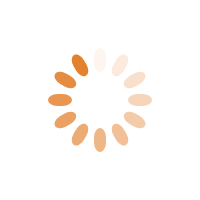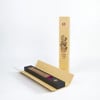What is Artificial Agarwood? Advantages and Disadvantages of creation of Agarwood on Aquilaria crassna
What is artificial incense?
Please read the article again: The 3 most popular methods of creating Agarwood on the Do Bau tree to understand that artificial Agarwood is Agarwood formed under the influence of humans, not from nature. Each method of promoting the process of creating bass has different advantages and disadvantages. Since then, the obtained product also has its highlights and limitations.
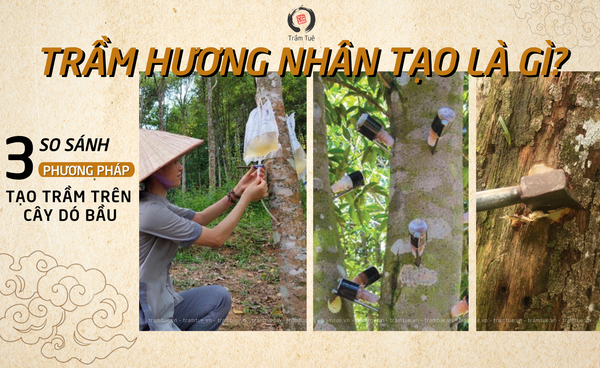
Physical method (using motorized impact)
This is the first method people thought of when they discovered that Agarwood was born from the lesions on the Aquilaria crassna tree. In addition to using a tight ax to create scratches, nailing rusty nails, drilling holes, people also drive steel pieces deep into the tree trunk.
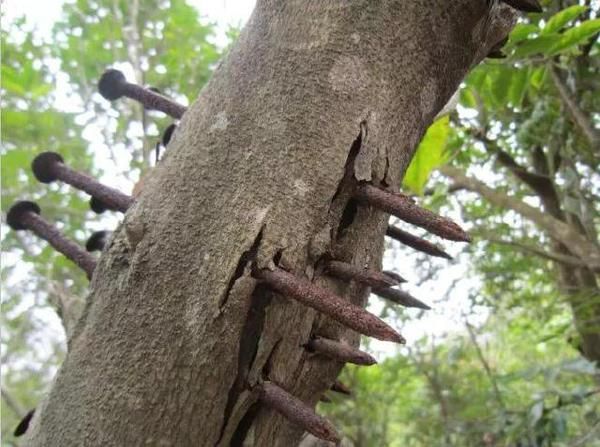
Advantages
- Simple, easy to do
- This method is a necessary condition for the formation of agarwood trees. From the wound, microorganisms will easily penetrate the trunk to parasitize.
Weakness
- The output of agarwood is very little, it takes a lot of effort
- Long time
- The probability of success is low, sometimes it takes decades for the tree to not produce agarwood
- Need to combine with other methods.

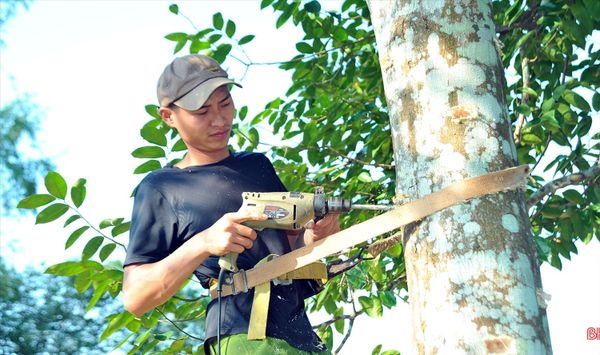
Chemical method (using chemicals)
Strongly acidic chemicals such as Sulfuric Acid (H2SO4), Hydrochloric Acid (HCl) or even the Dioxin (Orange Agent) ingredient in herbicides can be easily found in markets at very low prices. cheap without license. From these chemicals, people will apply two ways to stimulate the process of creating agarwood:
- Drill holes in the stem. Inject or pour the chemical mixture into the bottle, then fix it on the stem

The chemical solution stimulates the Agarwood tree to create agarwood (Source: Internet)
- Peel off the bark of the do gourd tree. Apply a layer of chemicals on the trunk to collect agarwood

Advantages
- The output of agarwood is more than the physical method
- Short harvest time, about 6-12 months after chemical injection or sweeping
- The probability of success is quite high
- The color of the essential oil is deep on the dark wood grain. When burned, it has a strong, concentrated aroma
- High selling price, often advertised as natural Agarwood
Weakness
- Due to the impact of strong chemicals when the tree is young, the tree rots and dies. In the area where the tree was transplanted with chemicals, other plants also died gradually. Chemicals seep into the soil affecting the water source of surrounding rivers and streams. This leads to ecological imbalance, affecting people's lives.
- People exposed to chemicals by touching and smelling often when the implant is pumped will be susceptible to dermatological and respiratory diseases. Over time, it can lead to cancer.
- When burning or burning incense, the amount of smoke remaining with chemical residues in products from Agarwood will cause users to experience stinging eyes, nose pain, headache, dizziness... This is the cause of rhinitis as well as exacerbation of symptoms in patients with asthma and allergic rhinitis.
Biological method (using microbial products)
In this method, the worker will drill many small holes in the trunk of the tree to create a wound. After that, a microbial solution from ant juice, probiotics, fungi... has been invested and researched in the drilled holes to stimulate and promote the tree to create agarwood

Advantages
- The obtained agarwood is guaranteed to be clean - real - safe for the health of the producer as well as the consumer.
- Plants grow naturally, not weakened like chemical transplants.
- Agarwood has a mild, sweet fragrance.
Weakness
- The yield of agarwood is less than the chemical method.
- It takes a long time to transplant and harvest, usually about 15-20 years.
- The probability of success is not too high, the economic efficiency is average if there is no investment in in-depth research. Many plants transplanted with microbial solution but did not produce agarwood.
- Microbiological solutions have a higher selling price than chemicals.
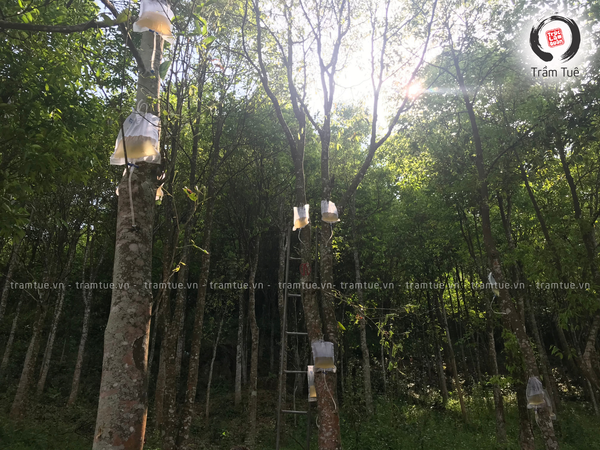
Tram Tue's microbial solution planting material forest
Comparing 3 methods of creating agarwood on Aquilaria crassna tree, you can partly understand why Aquilaria crassna has chosen biological methods, using microbial products to create Agarwood. We will explain in detail about micro-organisms in another article so that everyone has an overview of the current Agarwood industry.
